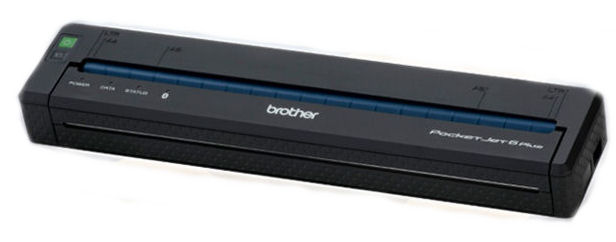A few years ago, in the middle of a hot, humid summer, an inattentive driver rear-ended my wife’s car. Luckily, no one was injured. The Deputy from our local Sheriff’s Office gave my wife a copy of the accident report that he printed using the printer in his patrol car. Unfortunately, when she got home and went to review the accident report, we could not read it. The cold drink in my wife’s cup holder had accumulated moisture from the humidity, which caused the printing on the paper to run when the paper inadvertently came into contact with the cup. The good news was that the Deputy had used an electronic accident reporting application, making it easy for someone in the office to print another copy of the form.
So, which type of printer works best for Law Enforcement purposes? For eCitation/eTicket and Electronic Accident Reporting applications in Law Enforcement, there are two printing technologies that account for most installations: inkjet and direct thermal. Inkjet technology uses liquid ink that is applied to paper through extremely small nozzles. Direct thermal technology uses very small pins in a print head to heat a coating that is pre-applied to the paper, causing it to change color and thus produce an image. Let’s take a closer look at the pros and cons of each.
Durablity & Life Span
Most direct thermal printers have a simpler design, with fewer moving parts than inkjet printers. This simplicity makes them less expensive to build, which lowers their purchase price. Fewer moving parts also makes direct thermal printers more durable and long-lasting. This leads to a lower total cost of ownership. The simpler design of a direct thermal printer further allows for a more compact design, saving precious space in already cramped patrol cars. Is it just me or do patrol cars seem to shrink with each new model that comes out?
Paper Cost
The heat-sensitive coating required on the paper of a direct thermal printer results in more expensive paper than the standard office paper you can use in an inkjet printer. However, the money saved on paper for an inkjet printer if offset because inkjet printers also require ink cartridge replacement, which direct thermal printers do not need.
Image Quality
Due to the chemical coating on direct thermal paper that reacts to the heat generated by the print head, documents might darken after printing if the paper is stored in a warm place. Heat can also cause gradual fading of the direct thermal image. Inkjet printers can produce higher resolution images and allow color printing that makes them better suited to printing images and pictures. On the other hand, thinking back to the story of my wife’s car accident, the original accident report she was given would have been fine had it been printed with a direct thermal printer. You can also store the actual direct thermal printer at lower temperatures than you can an inkjet printer mainly due to the ink.
The Better Choice is…?
In my opinion, direct thermal printers are the way to go. Although there are pros and cons of each type of printer, the advantages of a direct thermal printer outweigh the negatives.
The most popular direct thermal printer for Law Enforcement is the PocketJet Printer made by Brother Mobile Solutions. If you are in the process of implementing an eCitation and Accident Reporting system or you currently use inkjet printers and would like to try a PocketJet printer, contact us at L-Tron for more information or a demo.
